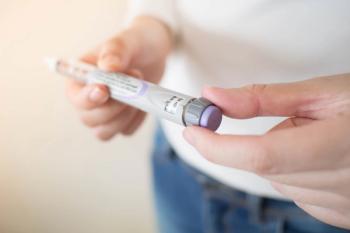
Researchers Call for More Data on Impact of Social Determinants of Health for Treatment of Menopause
Social determinants of health have significant impacts on health and quality of life, but little is known about the impact during menopause.
Some social determinants of health (SDOH) were associated with hormone therapy use for the treatment of menopause, indicating that more favorable SDOH may be associated with better access to care, according to results of a study published in Biology of Sex Differences. SDOH have significant impacts on health and quality of life, but little is known about their impact during menopause.1
“In this study of predominantly white women with health insurance, favorable SDOH were associated with higher likelihood for HT [hormone therapy] use. This is in keeping with prior literature that has shown a relationship between SDOH and a women’s health overall,” the study authors said.1
SDOH are conditions that affect a wide range of health, functioning, and quality-of-life outcomes and risks and are often categorized in 5 groups—economic stability, education access quality, health care access and quality, neighborhood and built environment, and social and community context. Examples can include housing, transportation, safety of neighborhoods, education, job opportunities, income, access to nutritious food and physical activity, discrimination, violence, polluted air and water, and language and literacy skills, according to the US Department of Health and Human Services.2
For women specifically, research into women’s health has been excluded and social factors are incredibly important to health, according to authors of a review published in Annual Review of Sociology. In the review, the study authors identify patterns of inadequate health outcomes relate to knowledge gaps and inequalities in health care. Pharmacists can play a large role in addressing SDOH for women, especially with their accessibility and frequent interactions with patients.3,4
In the current study, investigators aimed to determine the impact of SDOH on the likelihood of hormone therapy for midlife women. Patients were receiving primary care at Mayo Clinic between the ages of 45 years and 60 years from March and June 2021. They were provided a questionnaire on information such as medication for menopause symptoms. Demographics and SDHO were self-reported, and investigators used electronic medical records for clinical information.1
Investigators sent out 32,469 surveys, and 5219 responses were received. Approximately 38.1% completed the survey and had completed SDOH information within 2 years of taking the survey; thus, only 1988 individuals were included. Women had a mean age of 54.4 years and a body mass index (BMI) of 30.2 kg/m2. Approximately 97.1% were white and 83.5% were married. Only 258 patients reported current systemic hormone use for menopause.1
In the analysis, the study authors reported that women were less likely to use hormone therapy if they had a higher BMI, were unpartnered, were educated, or were smokers. Furthermore, they found that women who used extra virgin olive oil as their main fat in their diet were more likely to use hormone therapy, but there were no other SDOH that were statistically significantly associated with hormone therapy.1
“It will be beneficial to explore contraindications to HT [hormone therapy] in women with favorable SDOH vs. women with exposure to SDOH to evaluate if women with unfavorable SDOH may have more risk factors or contraindications which ultimately exclude them from HT [hormone therapy] compounding limitations to care access,” the study authors concluded.1
READ MORE:
Ready to impress your pharmacy colleagues with the latest drug information, industry trends, and patient care tips? Sign up today for our
REFERENCES
1. Kling JM, Abraham AE, Kapoor E, et al. Associations of social determinants of health on likelihood of systemic hormone therapy use in midlife women. Biol Sex Differ. 2025;16(1):37. Published 2025 Jun 1. doi:10.1186/s13293-025-00720-9
2. US Department of Health and Human Services. Social Determinants of Health. Accessed June 3, 2025. https://odphp.health.gov/healthypeople/priority-areas/social-determinants-health
3. Short SE, Zacher M. Women's Health: Population Patterns and Social Determinants. Annu Rev Sociol. 2022;48:277-298. doi:10.1146/annurev-soc-030320-034200
4. Kiles TM, Peroulas D, Borja-Hart N. Defining the role of pharmacists in addressing the social determinants of health. Res Social Adm Pharm. 2022;18(9):3699-3703. doi:10.1016/j.sapharm.2022.01.005
Newsletter
Pharmacy practice is always changing. Stay ahead of the curve with the Drug Topics newsletter and get the latest drug information, industry trends, and patient care tips.























































































































